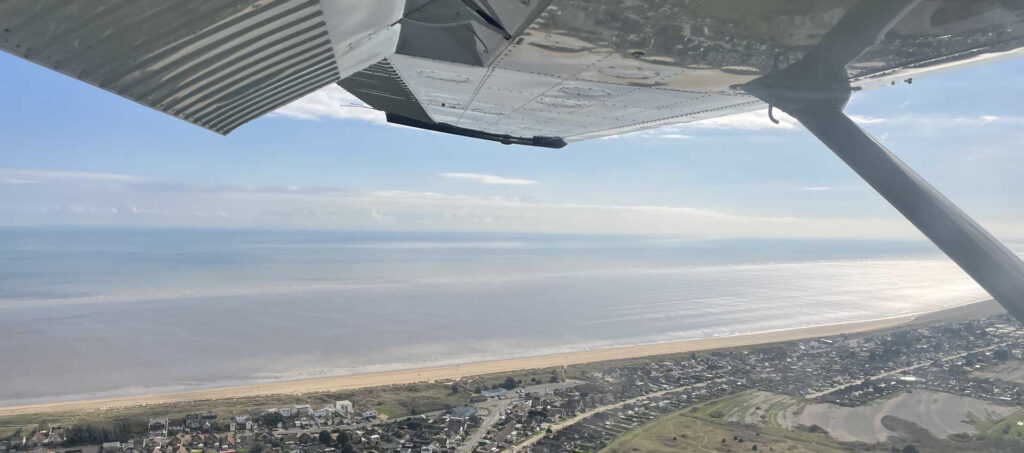
Last Saturday offered some amazing spring flying weather with plenty of sunshine for a change, after the warmest and wettest February in the UK for a long time. I flew with my family to Lydd EGMD in a Cessna 182 for a day out by the seaside.
The planning
We hired the Cessna 182 G-ORDM from Cambridge Aero Club. The club maintains some of the best aircraft I have flown, maintained and equipped to the highest standards. This Cessna 182 in particular is airways equipped and PBN approved. Although we will be flying under VFR for this flight, having the Garmin 430 as a primary navigation package is very useful because I do not have to rely on SkyDemon so much for primary navigation.
From Cambridge EGSC to Lydd EGMD is a relaxing short 1 hour flight. The only complication is the Stansted CTR. It is possible to transit it but given the short distance from Cambridge to the CTR boundary and the relatively fast speed profile of the 182, the request for a clearance will be of short notice. Without adding too much distance to the route, I took the prudent option which is to route via KEMPY to the northeast of Stansted, therefore avoiding the CTR. This means we only need to transit the Southend EGMC CTR, which can be easily accomplished given the ample flight time before we reach the zone boundary. The route taken both outbound and inbound was thus:
DCT KEMPY DCTGiven the favourable weather forecast on Friday evening, I decided to file the outbound flight plan the day before. Filing the flight plan is easily accomplished on my laptop using the AFPEx software. The outbound alternate is conveniently Southend EGMC. After sending the flight plan which gets transmitted instantly these days, I called up Lydd ATC for PPR. Given that my flight plan was already in front of the controller when I called, I did not have to pass any details on the phone and it took only a 10-second conversation for my PPR to be granted.
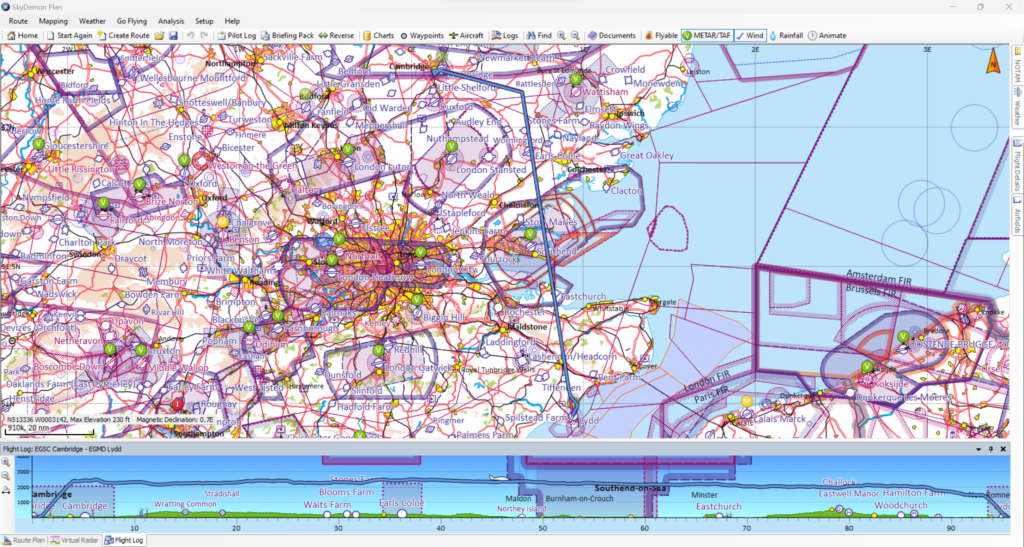
The flight
We arrived in Cambridge first thing in the morning to check out the aircraft. The aircraft has just come fresh out of its annual so everything is in tip-top condition and the engine oil is clean and golden. Nevertheless, I took a one-quart bottle and kept it in the baggage area just in case. Other than that, I just needed to refuel. The Cessna 182 holds 87 US gallons of usable fuel and the consumption is roughly 12 gallons per hour which translates to an endurance of 7 hours, although longer endurance is possible if one goes to high altitudes and uses a low cruise power setting. This trip requires only two hours of fuel plus reserves, but given that we only had three people on board, weight and balance permit me to fill both tanks to full. After all, fuel left on the ground is one of the least useful things in aviation.
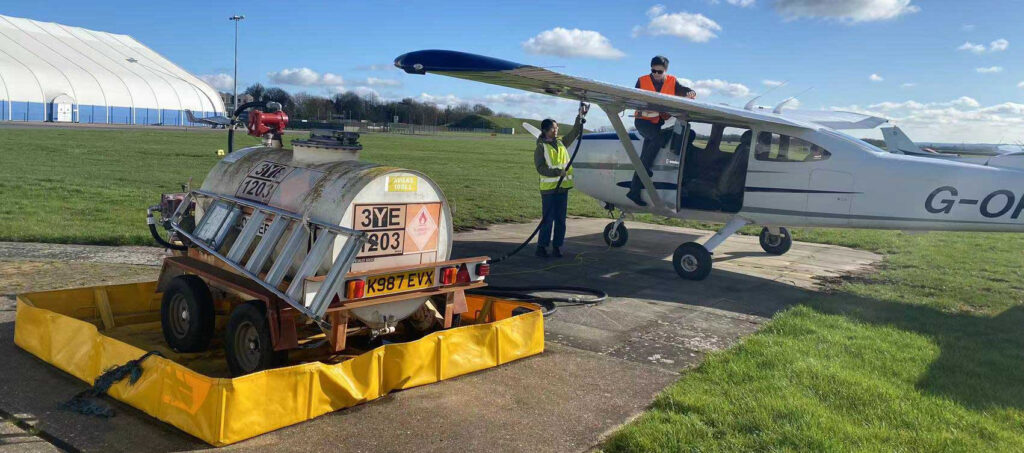
Meticulously briefing the departure and configuring the avionics on the ground always pay dividends. Before the departure, I set up my SkyDemon and SkyEcho to transmit and receive ADS-B signals and display any traffic on my iPad. I also input my route into the Garmin 430 so that I can navigate with it. The HSI in the aircraft has its NAV flag stuck out, so I had to make very sure on the ground that the needles were being correctly deflected by the 430, but the instrument seemed to be in working order other than the flag. It was alarming still but given that we were flying VFR we did not have to rely on the 430 entirely either. Cambridge is operating out-of-hours on Saturdays so there will be no ATC or ATIS. I set my radios accordingly anticipating a transfer directly to London Information shortly after take off. I also put the Southend and Lydd ATIS frequencies on the second radio so that I can listen to them at the press of a button.
After take off we quickly climbed to 2400 feet which is the cloud base. We set course after a right turn overhead the city upon reaching a safe altitude allowing me to glide back to the airfield if the engine fails. Not to say it’s a likely prospect – the engine ran beautifully after the fresh service and gave me a climb rate well exceeding 1000 ft per minute. We reached cruising altitude just as we set course to KEMPY. Given that we were above the overhead join height of 2000 ft AGL and above the ATZ if it were to exist, I did not need to monitor the Cambridge frequency any more. So I changed the frequency right away to London Information and asked them to activate my flight plan. This is relatively straightforward despite them taking some time to find the flight plan. All of this process was accomplished within a few minutes before we reached the halfway point to KEMPY which is a 10-minute leg.
From KEMPY we take a right turn onto a southerly track direct to Lydd. The Garmin 430 can give a countdown to the beginning of the turn to place us perfectly on the start of the next leg. Shortly after we negotiated for a zone transit clearance through Southend. It was as simple as passing details, setting their transponder code and being cleared through. We were initially cleared to cross at 2400 ft although I needed to request a descent to 2200 ft halfway through the crossing due to low cloud base. The crossing through Southend was easy and scenic, offering views of the city, the rivers, and the sea. We passed very close to the aerodrome itself and crossed paths with an A320 on the final approach. With plenty of vertical separation, it was a safe and memorable experience.
On the south side of the river Thames, we entered Kent to overfly the beautiful hills which generated some minor turbulence. There was also some benign thermic activity in the air which we rode, being bumped up and down by 50 ft gentally. Meanwhile, we copied Lydd ATIS which suggested that both danger areas were active. Given that runway 21 was in use which leads straight into the firing range, I briefed myself silently on the left-hand circuit to be flown in the event of a missed approach. We made initial contact with Lydd Approach overhead Ashford, roughly 15 miles to run. We did not need to pass any message and were told to report 4 miles and expect a straight-in approach to runway 21 long before reaching the vicinity of the aerodrome. Meanwhile, other aircraft were being instructed to join the circuit from various positions much closer than where we were. Maybe filing a VFR flight plan does have its benefits.
The town and its people
After landing it was a very short taxi to Apron C to park amidst the other GA aircraft, mainly PA28s. We did see a Rockwell commander which is a rarer variant. On entering the terminal we were greeted by a friendly and helpful lady who was able to book a taxi for us. Lydd is located in a relatively remote area so there are not many taxis around, and it is advisable to book a taxi in advance by calling the airport customer services before departure. On this occasion, we had Lee who is very professional and prompt. He had great knowledge of the past and present of the local area and took a keen interest in our flight. Before he dropped us off at the Pilot Inn Dungeness we were able to book our return trip in advance so as not to miss our departure later in the afternoon.
Dungeness was a cute town on the south English seaside with a stoney beach. While it was not possible to reach the sea on foot we enjoyed a short stroll on the pebbles. The Romney, Hythe and Dymchurch Railway runs through Dungeness and it was a funny sight when the miniature train passes the level crossing with real passengers having their heads butted up against the ceilings of the carriages. We visited the local seafood shop with a great selection and when my family took their time shopping I filed the return flight plan on my laptop. I installed a 4G modem on my laptop. With a Lebara sim card which had a great rate of £8.49 for 30 GB of UK&EU data every month, I was able to use AFPEx and other essential planning utilities on the move.
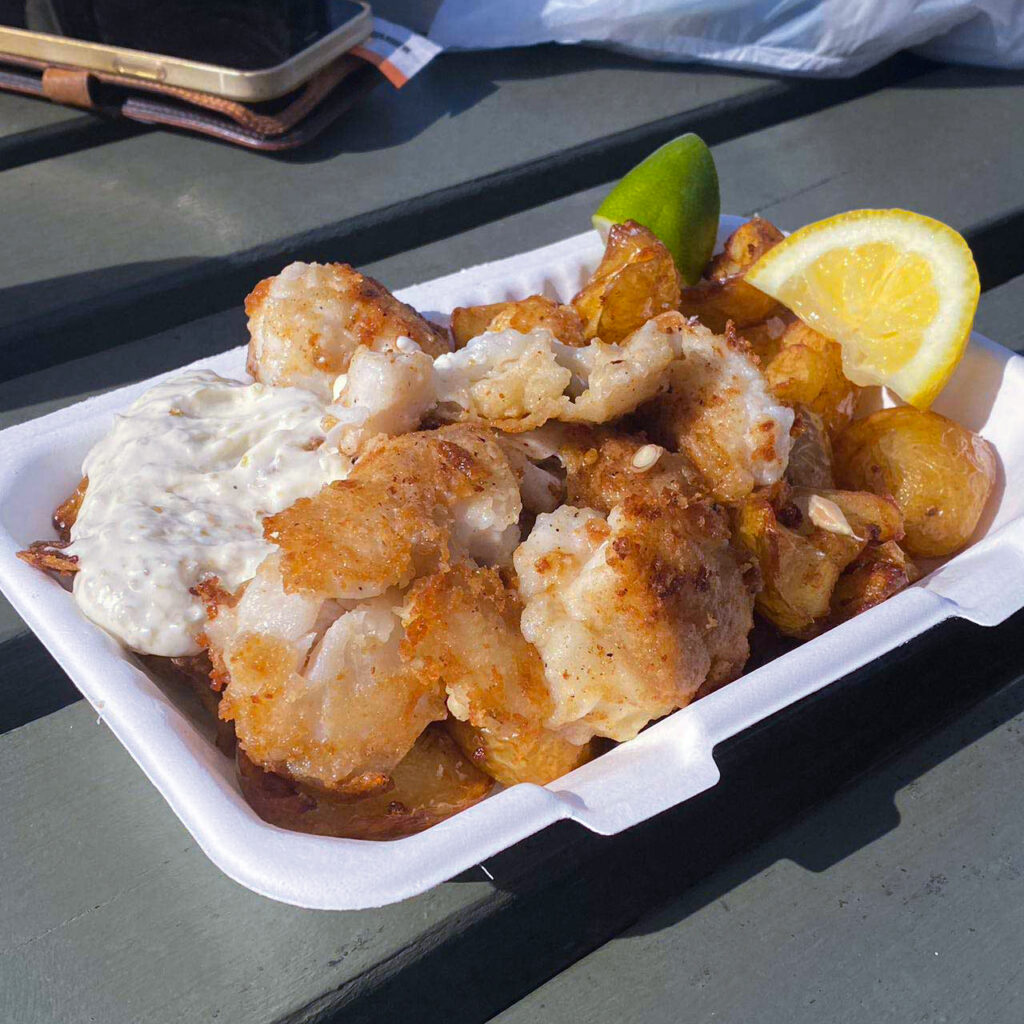
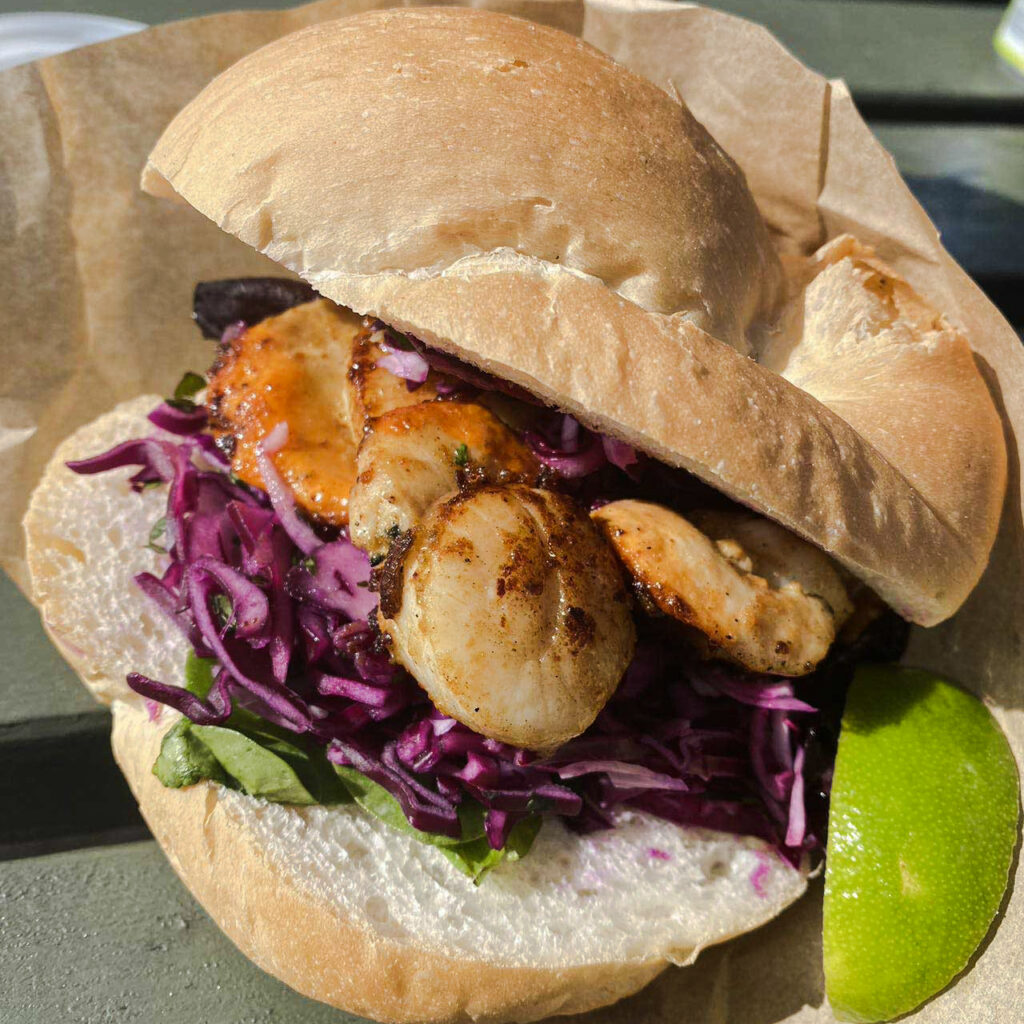
The Pilot Inn had a great reputation locally. It was recommended to us by the front desk lady at Lydd and then by Lee the taxi driver. The fact was made even more obvious when we turned up at the entrance 15 minutes before their opening at noon and the car park was already half full, with locals arriving by the minute to queue up at the doors. Meanwhile, our return taxi was booked in an hour at the Dungeness old lighthouse. So we had to sadly give up the idea of a nice sit-down lunch at the Pilots and made our move to the lighthouse. It was a long but enjoyable walk in the spring sunshine and sea breeze, with views of the amazingly diverse local houses and the nuclear power station. We stopped by a snack shack on the way which offered a casual but no less decent lunch, with scallops burgers and shallow fried fish fillets on the menu.
The return
Lee turned up on the second at the lighthouse to take us back to the airport where we settled our landing fees, which amounted to a reasonable £27 for a two-hour stay. Very shortly after we boarded the aircraft and the Lycoming IO-540 engine roared back to life. Once again we did not need to pass any details to the ATC thanks to the advance flight plan. We were given a right turnout immediately after departure to avoid both the firing range and the nuclear power station restricted area. There was more general aviation traffic out and about in the afternoon. We encountered a glider in a short range and dodged another light aircraft who probably did not see us. Southend was having an increase in traffic level too and we were required to climb 500 ft halfway through the crossing for separation. The area near Cambridge was relatively quieter upon passing KEMPY, and we made a standard overhead join at Cambridge followed by an uneventful smooth landing as there was no one else about. The only thing left to do was to close the flight plan, which requires a straightforward ARR message to be sent via AFPEx.
Overall, the two legs took almost exactly two hours of flying, half than what we’d have spent driving to the Norfolk beaches and flying meant we were able to travel much further afield, either to adventurous and exotic destinations or simply to enjoy a sunny weekend day by the seaside.
Contacts
Lydd Airport Customer Services
London Ashford Airport Limited, Lydd Airport, Kent TN29 9QL
+44 (0) 1797 322 400
LAA Email: [email protected]
FAL Email (executive handling agent): [email protected]
Lee’s taxi
+44 (0) 7824 171 778